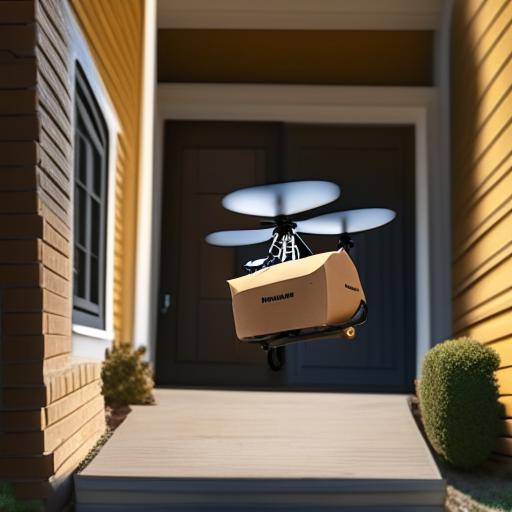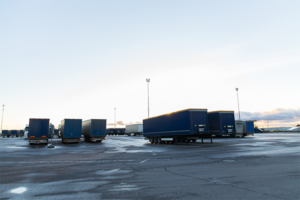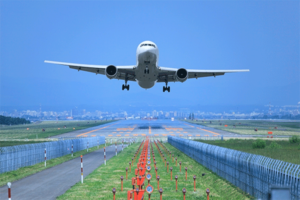Introduction
E-commerce has seen tremendous growth over the past years, fundamentally changing the way consumers shop and businesses operate. One crucial aspect that plays a significant role in the success of any e-commerce business is the Last Mile Delivery. This critical process directly impacts customer satisfaction, brand reputation, and overall profitability. In this section, we'll explore why Last Mile Delivery is essential to e-commerce and provide a brief overview of the various Last Mile Delivery solutions available.
The Importance of Last Mile Delivery in E-commerce
The term "Last Mile Delivery" refers to the final step of the delivery process, where a product is transported from a hub, warehouse, or distribution center to its final destination – the customer's doorstep. Last Mile Delivery is often considered the most critical aspect of the e-commerce supply chain because customers base their overall shopping experience heavily on the speed and efficiency of product delivery.
Moreover, customers today expect faster deliveries, better visibility into delivery status, and flexible options, such as the ability to alter the delivery location or time slot. Consequently, providing efficient Last Mile delivery has become a leading point of differentiation for e-commerce businesses in a highly competitive market.
Not only is a robust Last Mile Delivery process essential to meet customer expectations, but it also helps companies reduce overall logistics costs, enhance brand reputation, and increase customer loyalty.
Overview of Last Mile Delivery Solutions
Several Last Mile delivery solutions are available, each offering its unique advantages and challenges depending on e-commerce business requirements, product type, and customer expectations. Here are some common Last Mile Delivery Solutions:
- Traditional parcel delivery: This is the most common type, involving postal services and courier companies delivering parcels directly to customers.
- Same-day delivery: As the name suggests, this model ensures quick delivery on the same day of order placement, catering to time-sensitive deliveries.
- Click-and-Collect: Customers can place orders online and pick them up from designated collection points, such as retail stores, lockers, or kiosks.
- Drone deliveries: This relatively new method involves using drones for delivering lightweight packages, especially in hard-to-reach locations or reducing delivery time.
- Crowdsourced delivery: Engaging individual drivers to deliver parcels by leveraging a network effect, resulting in fast deliveries at a lower cost.
Optimizing Last Mile Delivery is crucial for e-commerce businesses, and adopting suitable Last Mile Delivery solutions can significantly impact business growth. In the following sections, we'll explore the benefits, challenges, and best practices involved in implementing Last Mile Delivery solutions.
II. Definition of Last Mile Delivery
A. What is Last Mile Delivery?
Last mile delivery refers to the final stage in the supply chain process, where a product is delivered from a transportation hub or warehouse to its destination—in most cases, the customer's doorstep. As e-commerce continues to grow rapidly, the importance of effective and efficient last mile delivery solutions has become more critical than ever. By providing seamless delivery experiences, businesses can improve customer satisfaction and ensure repeat purchases.
B. Different Types of Last Mile Delivery Solutions
There is a wide array of last mile delivery solutions available in the logistics industry, each designed to cater to different business requirements and operational challenges. Below are some of the most common types:
- Traditional couriers: Traditional courier services have been an essential part of the last mile delivery process for a long time. These services are ideal for businesses looking for a cost-effective and reliable method of delivering products to their customers.
- Parcel lockers: Parcel lockers are automated parcel terminals designed to store items for customers who may not be available to receive deliveries at their doorstep. This approach provides a convenient and secure method for customers to collect their packages at their preferred time.
- Crowdsourced delivery: Crowdsourced delivery platforms, also known as collaborative delivery, allow individuals to act as independent drivers and deliver items for businesses in their local area. This method enables businesses to expand their delivery capabilities, especially during peak shopping periods.
- Drones: Drone delivery is an emerging technology that has the potential to revolutionize last mile delivery. With the ability to overcome traffic congestion and other geographical barriers, drone deliveries can offer faster and more efficient delivery options.
- Autonomous vehicles: Similar to drone delivery, the use of self-driving vehicles for last mile deliveries is an evolving concept that aims to provide quick and efficient delivery services while reducing operational costs.
- In-store pickup: Also known as click-and-collect, in-store pickup allows customers to order products online and collect them at a nearby retail location. This option eliminates the need for last mile delivery and provides an added level of convenience for customers.
- Same-day delivery: As customer expectations continue to rise, businesses are striving to provide same-day delivery solutions. This approach involves efficient delivery processes and close collaboration between all parties involved in the supply chain.
Having a solid understanding of these last mile delivery solutions will help businesses choose the most appropriate option based on their unique requirements and operational challenges. Implementing the right solution can significantly enhance customer experiences and ultimately contribute to the overall success of an e-commerce business.
III. Benefits of Last Mile Delivery Solutions
Last mile delivery solutions are instrumental in elevating the experience of online shopping for customers and have contributed significantly to the growth and success of e-commerce businesses. In this section, we will explore the various benefits of last mile delivery solutions and how they impact the overall performance of the logistics and transportation industry.
3.1. Reduction of Logistics Costs
Implementing efficient last mile delivery solutions can help in reducing logistics costs for businesses. With advancements in technology, businesses can efficiently optimize routes, better manage delivery times, and reduce fuel consumption. In addition, accurate tracking and monitoring enable companies to cut back on resources previously used to handle customer inquiries related to delivery status. Automating processes and harnessing the power of data can minimize human intervention and administrative overheads, thus contributing to more cost-effective operations.
3.2. Improved Customer Satisfaction
One of the primary benefits of investing in last mile delivery solutions is that they can enhance customer satisfaction by offering faster delivery times, real-time tracking, and better overall delivery service. Meeting the demands and expectations of today's customers can be a challenge, given their need for speed, convenience, and transparency. By providing these attributes through well-designed last mile delivery solutions, businesses can boost customer loyalty and not only retain existing customers but also attract new ones through word-of-mouth referrals.
3.3. Increased Efficiency in Supply Chain Management
Last mile delivery solutions play a critical role in improving the overall efficiency of supply chain management. Technological tools, such as route optimization software, vehicle tracking systems, and advanced communication systems, can streamline various processes involved in the delivery cycle. As a result, businesses can achieve significant improvement in terms of delivery speed, operational performance, and ultimately, the profitability of the company.
Read more about Supply Chain 101 here.
3.4. Enhanced Flexibility and Adaptability
By implementing innovative last mile delivery solutions, companies can become more agile and better respond to dynamic market conditions or unforeseen situations. For instance, on-demand delivery platforms can fill in any gaps caused by disruptions, efficiently managing last-minute or time-sensitive orders. Such systems allow businesses to provide a seamless and uninterrupted service, regardless of any constraints of traditional delivery networks.
3.5. Eco-Friendly and Sustainable Solutions
Increasingly, consumers are demanding eco-friendly and sustainable delivery solutions that reduce the environmental footprint. Companies employing advanced last mile delivery solutions can meet these requirements by offering options like electric vehicles, bicycle, or even pedestrian delivery services. Furthermore, route optimization tools can help minimize fuel consumption and carbon emissions, contributing to a greener environment.
Discover eco-friendly transportation solutions near you.
3.6. Expand the Reach of Your Business
Optimizing and incorporating efficient last mile delivery solutions can help businesses extend their reach to remote areas or untapped markets, boosting their overall revenue potential. Creating a seamless and reliable delivery service to cater to a broader clientele can aid in building a positive brand image and fostering a spirit of inclusivity, thus opening doors to new opportunities and increased sales.
3.7. Strengthen Inventory Management and Warehousing
Effective last mile delivery solutions require a strong foundation in inventory management and warehousing systems. By integrating cutting-edge technologies and tools, businesses can minimize storage errors, optimize warehouse space, and ensure the accurate fulfillment of orders, all of which contribute to the overall success of the last mile delivery process.
Check out these tips for effective inventory management.
By understanding and leveraging the benefits of last mile delivery solutions, e-commerce businesses can ensure a delightful experience for their customers, generate higher profit margins, and stay ahead in the highly competitive landscape of the online marketplace.
IV. Challenges in Last Mile Delivery
The implementation of an effective last-mile delivery solution is crucial for e-commerce businesses. However, it is not without its challenges. In this section, we'll discuss some of the most common issues faced in last-mile delivery and how they can impact logistics and transportation processes.
1. Traffic and Transportation Infrastructure
One of the primary challenges in last-mile delivery is dealing with traffic congestion and poor transportation infrastructure.
a. Urban Congestion: With more people shopping online and demanding faster delivery options, cities and urban areas are experiencing increased traffic congestion. This impacts the speed and efficiency of last-mile deliveries, leading to delays and increased costs.
b. Poor Road Conditions: In many areas, particularly in developing countries, poor road conditions can pose significant challenges for last-mile delivery services. Vehicle breakdowns, delays, and higher maintenance costs can result from poor infrastructure.
c. Lack of Parking Spaces: Another common issue is the lack of parking spaces in urban areas, which further complicates the delivery process. Delivery personnel may have to park further away from the destination and carry packages on foot, resulting in longer delivery times and a higher likelihood of delayed or missed deliveries.
2. Delivery Personnel Management
Managing delivery personnel is crucial to ensuring efficient last-mile delivery services.
a. Training and Retention: Delivery personnel must be trained to use technology and navigate through traffic to complete their deliveries quickly and efficiently. High turnover rates in the industry lead to regular training sessions and added expenses for e-commerce businesses.
b. Scheduling and Routing: Assigning delivery routes and schedules can be a complex task that involves keeping track of numerous factors such as delivery windows, traffic conditions, and personnel availability. An inefficient routing system can lead to wasted time, increased fuel consumption, and overall inefficiency.
c. Incentives and Job Satisfaction: Keeping the delivery staff motivated is critical in maintaining an efficient last-mile delivery system. High levels of stress and workload can lead to lower morale, absenteeism, and decreased job satisfaction. Ensuring fair wages, adequate working conditions, and providing incentives can help retain skilled delivery personnel.
3. Customer Expectations and Preferences
Meeting customers' expectations and preferences plays a critical role in successful last-mile delivery strategies.
a. Delivery Time and Convenience: The customers' expectation for near-instant deliveries has risen over the years, putting pressure on e-commerce businesses to optimize their last-mile delivery solutions. Balancing the demand for quick deliveries with the need for cost-effective solutions can be challenging.
b. Delivery Windows: Customers often have specific time windows when they prefer to receive their packages. To make deliveries more convenient, businesses must invest in technology and systems that allow customers to choose their preferred delivery slots.
c. Changing Preferences: Customer preferences can change rapidly, making it essential for e-commerce businesses to adapt quickly. Offering diverse delivery options, such as same-day delivery, scheduled delivery, and click-and-collect, is necessary to cater to varied customer preferences and stay ahead of the competition.
4. Regulatory Compliance
Last-mile delivery services must adhere to various regulations, which can sometimes present challenges.
a. Vehicle Restrictions: Many urban areas enforce restrictions on vehicle types, sizes, and emissions. This may require businesses to invest in a diverse fleet that complies with local regulations, thus increasing expenses and requiring additional management efforts.
b. Permit and Licensing Requirements: Delivery vehicles and personnel may have to obtain special permits and licenses to operate in certain areas or provide specific services. This regulatory aspect can be time-consuming and costly for businesses.
c. Safety and Security: Ensuring the safety and security of the delivery process, including the handling of customer data, is a critical aspect of regulatory compliance. Data breaches or lost packages can lead to legal complications and customer dissatisfaction.
By understanding and addressing these challenges in last-mile delivery, e-commerce businesses can streamline their logistics processes, reduce costs, and improve customer satisfaction. In the next section, we will explore best practices in implementing last-mile delivery solutions that can help overcome these challenges.
V. Best Practices in Implementing Last Mile Delivery Solutions
As e-commerce continues to grow, businesses need to consider how best to embrace and optimize Last Mile Delivery Solutions to remain competitive. Below, we outline several best practices to implement these solutions effectively and efficiently.
1. Embrace Technology
In today's digital age, leveraging technology can significantly improve the efficiency of Last Mile Delivery Solutions. Here are some popular options:
- Route optimization software: This technology plans delivery routes efficiently, taking into account various factors such as traffic conditions, delivery windows, and vehicle capacity.
- Delivery tracking software: Transparent tracking allows customers to follow their package’s progress, encouraging trust and overall satisfaction.
- Real-time delivery alerts: Sending customers real-time updates enables them to plan their day better and possibly avoid missed deliveries.
- Electronic Proof of Delivery (EPOD): EPODs, sent via a mobile app or SMS, reduce the risk of lost or misplaced delivery documentation, providing quick and easy confirmation.
Proactively adopting these technologies will help improve your Last Mile Delivery Solutions.
2. Collaborate with Reliable and Flexible Last Mile Delivery Partners
Choosing the right delivery partner is crucial for successful Last Mile Delivery. Keep the following points in mind when making your decision:
- Experience: Partner with proven and experienced providers who know the ins and outs of last mile delivery.
- Custom solutions: Prioritize partners that offer customizable solutions tailored to your specific business needs.
- Scalability: Ensure your chosen provider can scale with your business, accommodating growth and expansion when the time comes.
Remember that the quality of your delivery partner directly impacts your customers' experience.
3. Prioritizing Customer Experience
The customer's perception of Last Mile Delivery Solutions affects their overall satisfaction with your business. To guarantee a great experience, consider implementing the following best practices:
- Flexibility in delivery options: Offer customers various options, such as same-day delivery, time-slot preference, and pick-up points.
- Clear communication: Be transparent and communicate regularly with your customers, keeping them informed of their package's status.
- Quick response to issues: If a problem arises, address it promptly and professionally. Apologize for the inconvenience and provide solutions.
- Feedback collection: Collect customer feedback on your Last Mile Delivery service. Use this information to make continuous improvements.
Customer satisfaction should always be top priority while implementing Last Mile Delivery Solutions.
4. Optimize Fulfillment Centers
A well-managed and organized fulfillment center helps to streamline your Last Mile Delivery Solutions. Some key tactics include:
- Inventory management: Implement 7 Tips for Effective Inventory Management techniques to prevent discrepancies and ensure accurate stock counts.
- Warehouse layout: Optimize your warehouse layout to facilitate efficient order picking, packing, and shipping processes.
- Automation: Consider integrating automation, such as automated distribution centers, to improve efficiency and reduce errors.
This will allow your business to provide faster deliveries and decrease costs.
5. Focus on Sustainability
With more consumers demanding eco-friendly solutions, adopting sustainable practices in your Last Mile Delivery process can boost your brand image. Some steps to take can include:
- Energy-efficient vehicles: Utilize electric or hybrid vehicles to minimize your carbon footprint.
- Optimizing routes: Implement route optimization software to reduce fuel consumption.
- Sustainable packaging: Choose eco-friendly packaging materials and methods.
Implementing these practices allows for a greener, more environmentally conscious Last Mile Delivery solution.
Conclusion
Last Mile Delivery Solutions are a crucial component of a successful e-commerce business, and implementing the above best practices will significantly improve the entire process. Continuously striving for innovation and improvement will keep your business competitive in a rapidly evolving marketplace. E-commerce businesses must prioritize their logistics capabilities and revolutionize their delivery process to provide the best possible experience for customers.
FAQs on Last Mile Delivery Solutions
- 1. What is the meaning of Last Mile Delivery in the e-commerce industry?
- Last Mile Delivery refers to the final stage of the delivery process in which a package is transported from a distribution center or hub to its final destination – typically, the customer’s home or office. This is a critical aspect of e-commerce operations, as it directly impacts customer satisfaction.
- 2. What are the different types of Last Mile Delivery Solutions?
- Several types of Last Mile Delivery Solutions exist, such as traditional delivery via courier services, delivery through local postal services, or using modern technologies like drones and autonomous delivery vehicles. Each solution has its unique advantages and disadvantages, depending on factors like location, package size, and delivery timeline.
- 3. How do Last Mile Delivery Solutions benefit e-commerce businesses?
- Last Mile Delivery Solutions offer various benefits, including reduced logistics costs, improved customer satisfaction, and increased efficiency in supply chain management. By choosing the right solution, businesses can optimize their delivery process and ensure a hassle-free experience for their customers.
- 4. What are some of the challenges faced in Last Mile Delivery?
- Some common challenges in Last Mile Delivery include traffic congestion, inadequate transportation infrastructure, and managing delivery personnel. These factors can lead to delays in delivery, increased operating costs, and customer dissatisfaction.
- 5. How can e-commerce businesses overcome the challenges of Last Mile Delivery?
- To overcome Last Mile Delivery challenges, businesses can implement best practices like utilizing advanced technology, collaborating with reliable delivery partners, and prioritizing customer experience. This approach helps in streamlining the delivery process and ensuring customer satisfaction.
Final Thoughts
Last Mile Delivery Solutions play a vital role in the success of e-commerce businesses, with customer satisfaction serving as the ultimate benchmark. By identifying and implementing the best practices, businesses can significantly improve their delivery process and leave a lasting impression on their customers.







